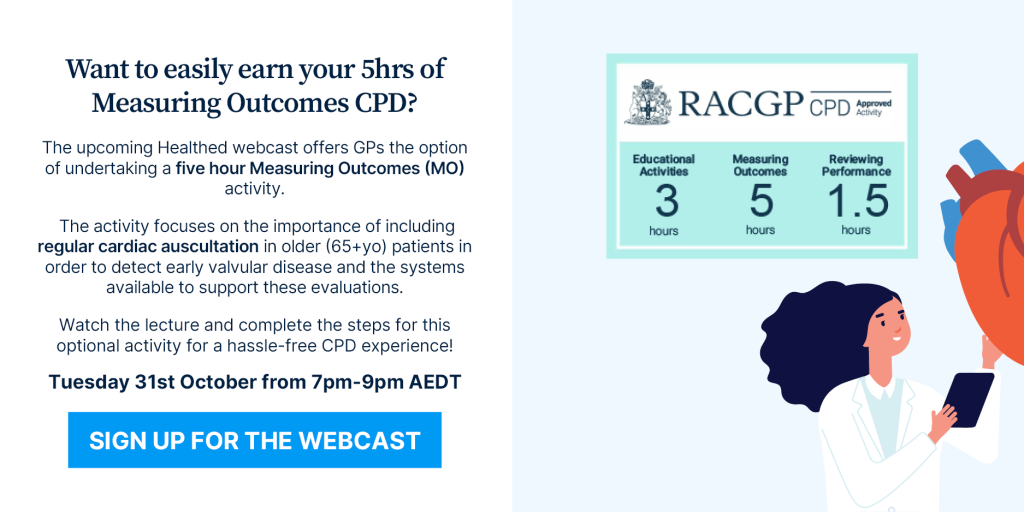Page 105 of 130
Surviving breast cancer not the end of the story
Breast cancer survival has improved dramatically over the last few decades.
Courtesy of earlier diagnosis and better treatments, five year survival has increased from 70% in the 1980s to 90%, says Melbourne medical oncologist, Dr Jacqueline Chirgwin in the latest issue of the MJA.
It is little wonder then that there is now increased focus on the ongoing general health in this ever-growing population of breast cancer survivors.
“Although breast cancer is worldwide the most common cancer in women, many, perhaps most patients die from other causes,” she says.
Dr Chirgwin’s comments are in relation to an Australian study, published in the same issue of the journal which showed comorbid conditions are more likely to develop in women who have been diagnosed with hormone-dependent breast cancer than in women without cancer.
The South Australian researchers reached this conclusion after analysing a random sample of PBS data from a cohort of women who commenced endocrine therapy at some time in the eight years from 2004 and compared that with age and sex matched controls who weren’t taking anti-cancer treatment.
Conditions significantly more likely to develop in the breast cancer women included depression, pain or pain-inflammation, osteoporosis, diabetes, cardiovascular disorders and gastric acid disorders.
As the study authors point out there are a number of very logical reasons why these conditions are more likely in this particular group of women. For example it is hardly surprising that someone given a diagnosis of breast cancer might subsequently develop depression and be prescribed antidepressants. Similarly a number of the cancer medications may contribute to comorbidities such as cardiovascular disease, osteoporosis and musculoskeletal pain, in addition menopausal hormone therapy is contraindicated.
In addition some risk factors for breast cancer are the same risk factors for other chronic conditions such as heart disease and diabetes, namely excessive alcohol consumption, obesity and physical inactivity.
And while the findings might not be all that surprising, the researchers suggest that we are missing a major opportunity to target this at-risk group in a manner which will ultimately improve their health outcome, independent of the breast cancer.
“As most women diagnosed with breast cancer in Australia can now be cured, the burden of non-cancer comorbidities is becoming a major health concern for these patients, but this is still largely unrecognised.
Future breast cancer research should focus on strategies that effectively respond to the burden imposed by these comorbidities,” they concluded.
Ref:
MJA doi:10.5694/mja17.00006
doi:10.5694/mja17.00938

Tags: Oncology
January 17, 2018
Syphilis – it’s back
Syphilis
Syphilis, caused by the spirochaete Treponema pallidum is an old disease. Many notable figures throughout history are thought to have suffered from this scourge. It remains exquisitely sensitive to penicillin so, in theory, should be easily treatable.
Over the past two years, the number of notified cases of infectious syphilis – syphilis of less than two years’ duration — has continued to grow.
In the Northern Territory and Queensland, the emerging risk groups are young Aboriginal and Torres Strait Islanders (ATSI), particularly people from the north of the State. In this group, in which young females are infected, there is now a real risk of new cases of congenital syphilis.
In other geographical areas, gay and bisexual males form the major risk group. Co-infections with other sexually transmitted infections (STIs) are common and should always be tested for simultaneously. Similarly, all STI screens should include a test for syphilis. At-risk patients require screening for co-existing chlamydia, gonorrhoea and/or and trichomonas if the patient belongs to the ATSI group. Screening for HIV, hepatitis A, B and C should also occur, with hepatitis A and B vaccination in those who are non-immune.
The recommended regular screening for asymptomatic gay and bisexual males is outlined in the now renamed STIGMA guidelines (http://stipu.nsw.gov.au/wp-content/uploads/STIGMA_Testing_Guidelines_Final_v5.pdf).
Presentation
Early or infectious syphilis (less than two years’ duration) includes primary, secondary and early latent syphilis (Algorithms 1 and 2).
• Primary syphilis usually manifests as a chancre (an anogenital or, less commonly, extragenital painless, but also sometimes painful, ulcer with indurated edges).
• Progression to secondary syphilis occurs over the following months and presents as an acute systemic illness with rash, which is usually truncal, but also involving palms and soles, condylomata lata (clusters of soft, moist lumps in skin folds of the anogenital area), mucosal lesions, alopecia, lymphadenopathy, hepatitis, or meningitis.
• Early latent syphilis is infection of less than two years’ duration where the patient is asymptomatic. Late latent syphilis is defined as latent (asymptomatic) syphilis of longer than two years’ duration, or of unknown duration. Tertiary syphilis refers to syphilis of longer than two years’ duration, or of unknown duration, with cardiovascular, central nervous system or skin and bone (gummatous syphilis) involvement.
Risk of transmission of syphilis from a pregnant mother to her fetus depends on the stage of syphilis during pregnancy. Management is clearly outlined in the ASID Management of Perinatal Infections Guidelines (https://www.asid. net.au/documents/item/368)
General Practice Pathology is a new regular column each authored by an Australian expert pathologist on a topic of particular relevance and interest to practising GPs.
The authors provide this editorial, free of charge as part of an educational initiative developed and coordinated by Sonic Pathology.

Tags: Infectious Diseases, Sexual Health
Menopausal hormonal therapy prevents depression
Sometimes evidence proves what was long-suspected to be true.
A new study, just published in JAMA Psychiatry shows women who took hormone replacement therapy early in the menopausal transition had almost half the risk of developing clinically significant depressive symptoms compared to women who took a placebo.
The study also confirmed that women of this age and stage are at high risk of significant depression, with almost one third of women in the placebo group developing symptoms and signs of the condition over the 12 month study period.
Previous research had suggested that hormone therapy could help manage existing depression in menopausal women, however according to the Canadian researchers, this study, conducted among initially euthymic women was the first to show hormone therapy’s role in preventing the affective disorder.
More than 170 perimenopausal and early post-menopausal women were randomly assigned to receive transdermal oestradiol (0.1mg/day) and intermittent oral micronized progesterone or placebo patches and tablets for 12 months. They were assessed regularly for depression using a validated depression scale (CES-D). Women on placebo were more likely to record a score that equated with significant depression at least once over the study period (32.3%) compared with women taking the hormone therapy (17.3%).
Interestingly, women who had had what the researchers called ‘stressful life events’ in the six months prior to enrolment in the trial actually had greater benefit from the hormone therapy. Whereas other possible confounders such as baseline vasomotor symptoms, a history of depression, and baseline oestradiol levels did not appear to affect the protective benefit of the therapy.
The progesterone was given for 12 days every three months, to induce vaginal bleeding so the finding that this adverse effect was more common in the hormone therapy group was hardly surprising but of note the two groups did not differ in other adverse effects including headaches, bloating, breast tenderness, weight gain and GI symptoms.
An accompanying editorial sounded a few warnings about the study including the fact that the oestrogen dose was higher than currently recommended for treating women with hot flushes and the progestin dose was less than that recommended to protect the endometrium. The two editorial authors, including Dr Martha Hickey, from the University of Melbourne also cautioned that using hormone therapy to prevent depression might result in prolonged hormone exposure with the known risks associated with this, and is not currently recommended for this indication.
However, the study authors were cautiously enthusiastic about their findings saying, “If confirmed in a larger sample of early perimenopausal women, the findings of this study…suggest that hormone therapy may also be indicated for the prevention and/or treatment of depressive symptoms appearing in the early menopause transition, regardless of whether menopausal symptoms are present.”
Ref:
JAMA Psychiatry. doi:10.1001/jamapsychiatry.2017.3998

Tags: Obstetrics and Gynaecology, Psychiatry
January 10, 2018
Depressing news for smokers
Using prescription drugs or over-the-counter products like gums, mints or patches won’t increase your chances of quitting smoking a year later, according to a new study.
The US researchers followed two groups of people 2002/03 and 2010/11 and found at the end of the 12-month period, those using varenicline (sold in Australia as Champix), bupropion (Zyban), or nicotine-replacement therapy (gums, mints or patches) were no more likely to have quit smoking for 30 days or more than those who didn’t use these drugs.
Read more – Weekly Dose: Champix’s effectiveness is questionable and safety record is concerning
Evidence based smoking cessation?
We’re told the best way to quit smoking is to use an “evidence-based” method: a strategy supported by high-quality research evidence. And for the last 30 or so years, this has been nicotine-replacement therapy, bupropion (Zyban) and varenicline (Champix), which claim to increase (and sometimes double) your chance of success.
In the hierarchy of evidence, the lowest form is anecdote or case studies (“I smoked for 20 years, then an alternative therapist sprinkled magic powder on me, and the next day I stopped smoking!”). These cannot withstand the most elementary critical appraisal, starting with the basic question of how many similar smokers sprinkled with the powder kept smoking and how many who went nowhere it also stopped smoking.
Far higher up the evidence pyramid is the double-blinded, randomised controlled trial (RCTs). In these, both the person taking the treatment and those delivering it are unware of who is taking the active drug and who is taking the comparison placebo or comparison drug. All enrolled in RCTs are randomly allocated to the active or placebo/comparison groups. The numbers of participants are sufficiently large enough to allow for an outcome to be declared statistically significant (or not) above a chance finding.
Read more – Randomised control trials: what makes them the gold standard in medical research?
Some have tried to dismiss earlier findings about the poor performance of nicotine-replacement therapy by emphasising “indication bias”. In the real world, those who opt to use medications to try to quit are likely to be more intractable smokers, more highly addicted to nicotine, and with histories of failure at quitting unaided. No one should therefore be surprised if they fail more often than those who try to quit on their own.
In this new study, this issue was anticipated and all smokers were assessed by what the study authors called a “propensity to quit” score. This score accounts for factors such as smoking intensity, nicotine dependence, their quitting history, self-efficacy to quit, and whether they lived in a smoke-free home where quitting would likely be more supported.
In the analysis, those who tried to quit with drugs and those who didn’t were matched on this propensity score, so “like with like” could be compared in the analysis. The findings held even when these “propensity” to quit factors were taken into account.
RCTs are very different to real world use
Critics have long pointed out that RCTs have many features which make them a pale shadow of how drugs are used in the real world.
RCTs often exclude people with mental illness, poor English, and no fixed address. Excluding hard-to-reach and treat participants is likely to produce more flattering results.
In the real world, people are not paid or otherwise incentivised to keep taking the drugs across the full period of the trial, so compliance is almost always far lower.
In the real world, people do not get reminder calls, texts or visits from researchers highly motivated to minimise trial drop-out. There is no “Hawthorne effect”: when trial involvement and the attention paid to participants alters the outcomes.
Nicotine-addicted people generally know very quickly if they have been allocated to the placebo arm in NRT trials because their brains feel deprived of nicotine. They invariably experience unpleasant symptoms. Knowing they have been allocated to the placebo undermines the integrity of the trial because it is important participants believe the drug might be effective.
Large, real world studies like the one just published, which assess long-term success, not just end-of-treatment or short-term results, are therefore of most importance in assessing effectiveness. These new data ought to cause such rhetoric to cool right down.
As for the evidence on e-cigarettes in quitting, neither the US Preventive Health Services Task Force, nor the UK’s National Institute for Health and Care Excellence or Australia’s National Health and Medical Research Council, have endorsed e-cigarettes as an effective way of quitting smoking.
Read more: Want to quit smoking? Switching to e-cigarettes no advantage
Quitting smoking is the single most important thing anyone can do to reduce the likelihood they will get heart or lung disease, and a whole string of cancers.
It has been in the clear interests of the pharmaceutical and, more recently, the vaping (e-cigarette) industries, to promote the notion that anyone who tries to quit alone is the equivalent of someone with pneumonia refusing antibiotics. Hundreds of millions around the world have quit smoking without using any pharmaceutical intervention.
Before nicotine-replacement therapies became available in the 1980s, many millions of smokers successfully quit smoking without using any drug or nicotine substitute. The same still happens today: most ex-smokers quit by going cold turkey.
![]() The problem is, in recent years, the government has moth-balled the national quit campaign, the megaphone for promoting this very positive message. Commercial interests are now commodifying something millions have always done for themselves.
The problem is, in recent years, the government has moth-balled the national quit campaign, the megaphone for promoting this very positive message. Commercial interests are now commodifying something millions have always done for themselves.
Simon Chapman, Emeritus Professor in Public Health, University of Sydney
This article was originally published on The Conversation. Read the original article.

Tags: Addiction Medicine, Evidence-based Medicine, Respiratory
Neuroscience in pictures: the best images of the year
To understand how the healthy brain works and what occurs in brain disease, neuroscientists use many microscopy techniques, ranging from whole-brain human MRIs to imaging within a single neuron (brain cell), creating stunning images in the process.

Tags: Neurology
Green light for ginkgo
Ischaemic stroke patients are less likely to deteriorate mentally if they take ginkgo biloba extract in addition to low-dose aspirin in the acute phase, a new study suggests.
“Cognitive decline after stroke can result in vascular cognitive impairment and Alzheimer’s disease,” the study authors wrote.
Importantly then, this randomised controlled trial showed stroke patients who took ginkgo as well as aspirin had better memory function, executive functions, neurological function and daily life in the six months after experiencing their stroke than those patients who took aspirin alone.
The Chinese study also showed that taking ginkgo was not associated with an increased incidence of adverse events.
The results of the study, published in the journal, Stroke and Vascular Neurology support the long-held hypothesis that ginkgo protects against neuronal death caused by ischaemia, which had been demonstrated in animal stroke models.
It has been suggested that the possible mechanism of ginkgo’s effectiveness may include anti-apoptosis and increasing cerebral blood flow.
In the study, researchers randomised over 340 patients, from five hospitals who had had an ischaemic stroke in the previous seven days to receive either 450mg of ginkgo biloba extract with 100mg aspirin daily or only the 100mg of aspirin daily.
Both groups were treated for six months and were various intervals over that period. From the very early assessments (at 12 days) and through until 180 days, the difference in the assessments of cognitive and executive function was statistically significant. Similarly neurological and global function was significantly better in the group that took ginkgo.
“These data suggest that [ginkgo biloba extract] is effective and could be recommended in the treatment of acute ischaemic stroke,” the study authors concluded.
Ref:
Li S, et al. Stroke and Vascular Neurology 2017; 0:000104. doi:10.1136 /svn-2017-000104

Tags: Cardiology, Psychiatry
December 20, 2017
Pregnancy doesn’t ‘cure’ endometriosis, so where does this advice come from?
Many Australian women with endometriosis are reporting they’re being advised a reliable treatment or even possible cure for their endometriosis is to “go away and have a baby”. This message is consistent with what women from other countries are also being told by a wide range of sources from self-help books to web forums to medical professionals.
Pregnancy as a natural cure for endometriosis appears to date back to the early 20th century. However, even into the 1950s and 1960s, when pregnancy was commonly recommended as a treatment for endometriosis, this evidence was based mostly on case reports of women whose endometriosis improved during pregnancy. Case reports are often unusual findings and don’t necessarily reflect what happens to most people.
Pregnancy as a treatment for endometriosis does not appear in current international guidelines for the management of endometriosis. It’s also not mentioned as a treatment by Australian pelvic pain specialists and is classed as a “myth” by reputable endometriosis support sites.
Read more: Women with endometriosis need support, not judgement
Endometriosis and the lack of a cure
Endometriosis is the presence of tissue similar to the lining of the uterus outside the uterus itself. Accurate estimates of how many women in Australia have endometriosis are hard to find, but a common figure is around one in ten women during their reproductive years.
While severe pain during the period is a common symptom of endometriosis, it’s so much more than just a “really bad period”. There’s almost no area of women’s lives that is not negatively affected by the condition.
Current medical treatments, often using hormone therapy, are not always effective. And the side effects of many of the hormonal treatments can be particularly unpleasant for women, leading them to stop treatment.
Excision surgery, in which the endometrial lesions are cut away, is the most effective current treatment. But surgery is not something most women enter into lightly, given the cost and risk of undergoing surgery. Unfortunately, even surgery is not always successful with around 50% of women having symptoms reoccur after five years.
When we look at women around the world, it looks like having children does decrease the amount of period pain women have. A significant problem with this is we don’t know if these women had endometriosis, and these kinds of studies can’t tell us for sure if getting pregnant was responsible for this reduction in period pain.
Read more: Women aren’t responsible for endometriosis, nor should they be expected to cure themselves
Pregnancy, pain and the brain
Women with endometriosis, like other chronic pain conditions, have changes in the way their brains process pain. Nerves, especially in the pelvis, are also more sensitive than in women without chronic pain. The concept of “calming” these hyperactive pain pathways is an important treatment strategy in treating chronic endometriosis pain. Each time menstruation occurs it irritates these sensitive nerves and reinforces these pain pathways.
One way to prevent this reinforcement of pain pathways can be by stopping regular menstruation entirely. This is a key reason women with endometriosis are so often treated with continuous use of hormonal contraceptives.
During pregnancy there’s also a suppression of menstruation. So it’s possible during pregnancy there will be a reduction in endometriosis-related pain. It’s also just as possible pregnancy will make endometriosis-related pain worse, due to extra pressure on these sensitive pelvic nerves. We just don’t have the research to be able to answer this.
Read more – Health Check: are painful periods normal?
After giving birth, it’s quite possible the pain, if it had decreased, will return. This is especially true once women start having regular periods again, as there’s no evidence pregnancy shrinks endometrial lesions or changes pain processing in the long term, both major drivers of endometriosis pain.
Should pregnancy be recommended as a treatment?
Pregnancy might help reduce endometriosis symptoms, if only temporarily. But women with endometriosis often rightly feel upset and offended when advised to have a baby as a treatment strategy.
There are also risks involved, as women with endometriosis are more likely to have pre-term births, increased rates of caesarean sections and an increased risk of miscarriage.
Women shouldn’t have to bring another human into the world to relieve the pain of endometriosis. This is why we need to prioritise understanding the cause of endometriosis, finding effective treatments and eventually a cure.
![]() Syl Freedman, Co-founder EndoActive, M.A. Health Communication, MPhil (Medicine) Candidate, University of Sydney contributed to this article.
Syl Freedman, Co-founder EndoActive, M.A. Health Communication, MPhil (Medicine) Candidate, University of Sydney contributed to this article.
Mike Armour, Post-doctoral research fellow in women’s health,NICM, Western Sydney University
This article was originally published on The Conversation. Read the original article.

New hope for kids with severe food allergies
One of the new class of biologics may have a pivotal role in desensitising children with severe food allergies, US researchers say.
That was the conclusion after their placebo-controlled study showed that a preliminary short course of the monoclonal antibody, omalizumab (Xolair) improved the safety and efficacy of oral immunotherapy in children with multiple severe Ig-E mediated food allergies.
Admittedly the study was small, involving only 48 children aged 4-15 years, and only looked at children with Ig-E mediated allergies to multiple foods but the implications, the study authors say are important.
These patients are a highly atopic population who are at risk of near-fatal or fatal food allergic reactions to multiple foods. There is plenty of evidence that oral immunotherapy is effective for single food desensitisation. However there has been little proof that immunotherapy works in children with allergies to multiple foods, and these are the ones more likely to accidentally ingest a food that may trigger anaphylaxis. Children with multiple food allergies are also far more likely to be unable to tolerate the oral immunotherapy.
So in this phase 2 trial, those children in the treatment group were given omalizumab for eight weeks before commencing oral immunotherapy against a range of allergens including peanuts, cows milk and several different tree nuts. Outcomes were assessed by a food challenge at week 36 that looked at the ability to tolerate 2g of the trigger food.
At the 36 week mark, 83% of children could now tolerate the allergenic food in the omalizumab-primed group compared with only 33% in the placebo group. It also appeared that omalizumab was well-tolerated with no serious or severe adverse events occurring in those who received it.
The impact of these findings on the lives of affected children should not be underestimated, the researchers suggest in The Lancet Gastroenterology and Hepatology.
“[The] ability to increase an individual’s threshold of food ingestion to a serving of protein [for example] is important for their nutrition and overall quality of life,” they wrote.
The study had its limitations, namely it remains unknown if the desensitisation was sustained but the finding that the anti-IgE cover made the oral immunotherapy more tolerable and therefore more effective is a major though incremental advance in the management of this increasingly prevalent condition.
Ref:
Lancet Gastroenterology and Hepatology. Published Online Dec 11, 2017
http://dx.doi.org/10.1016/52468-1253(17)30392-8

Tags: Evidence-based Medicine, Immunology and Allergy
December 12, 2017
Page 105 of 130






